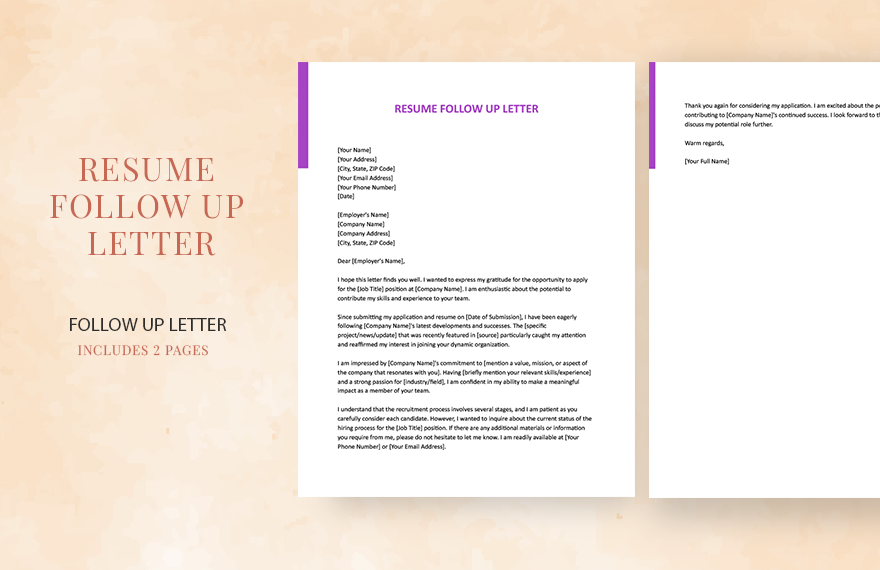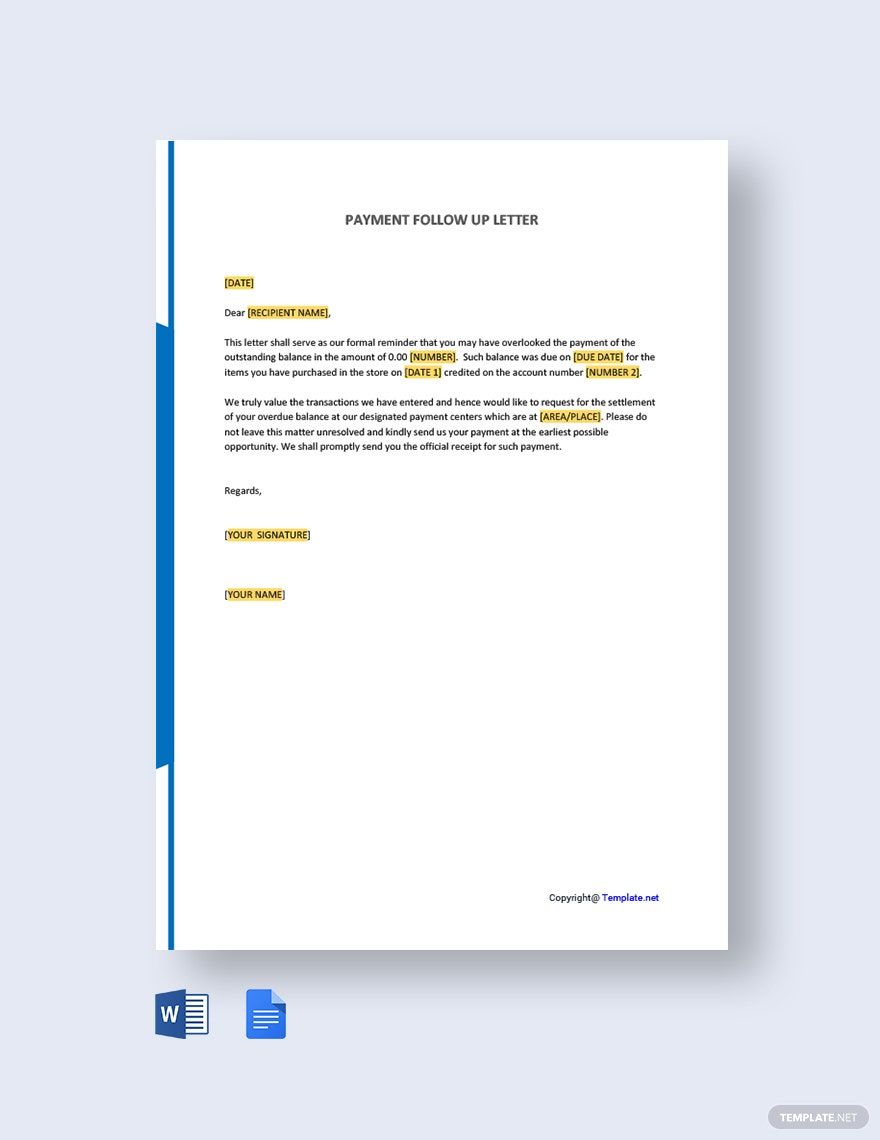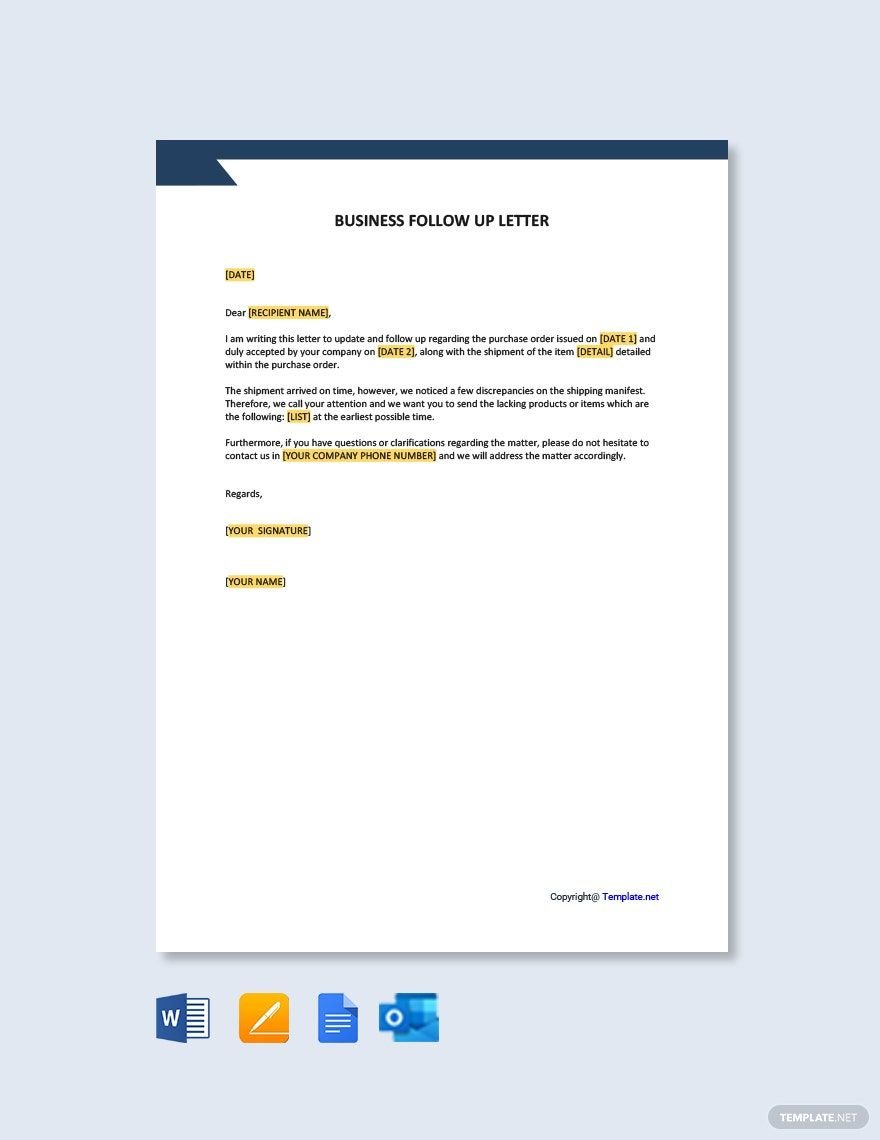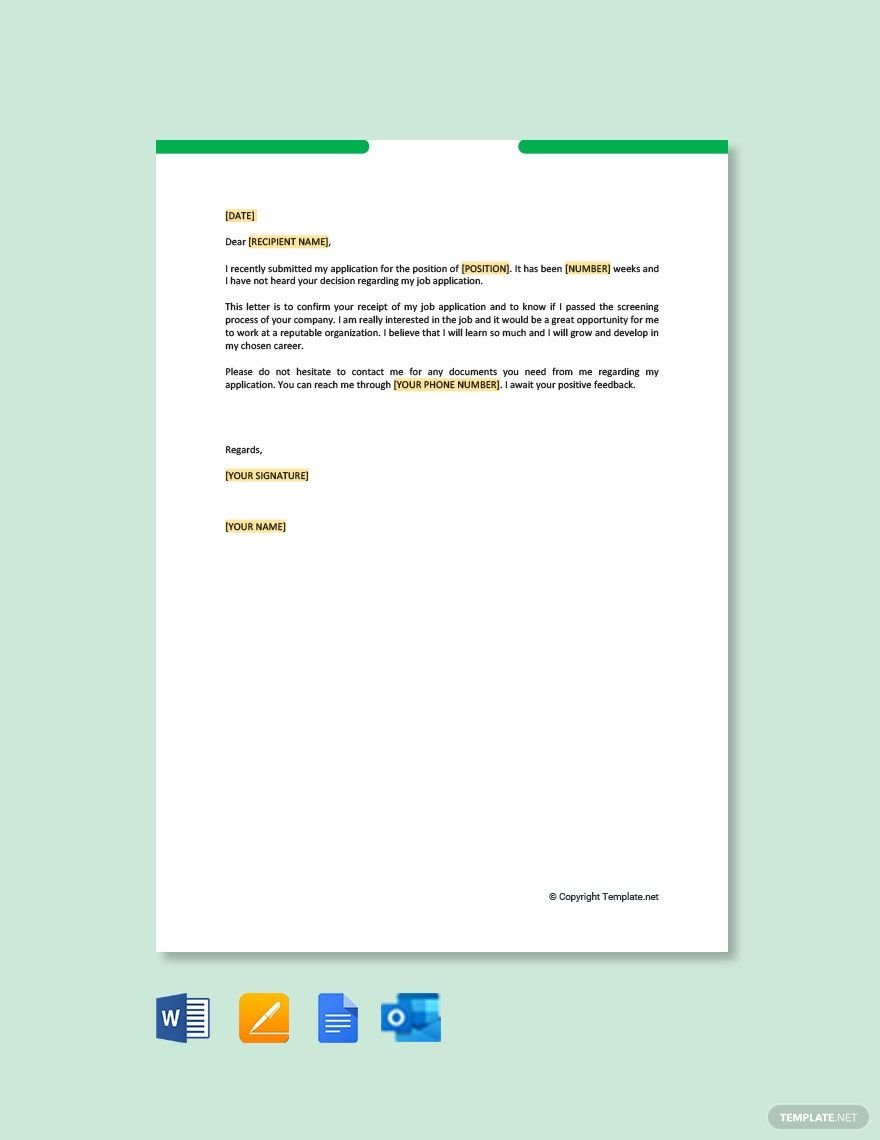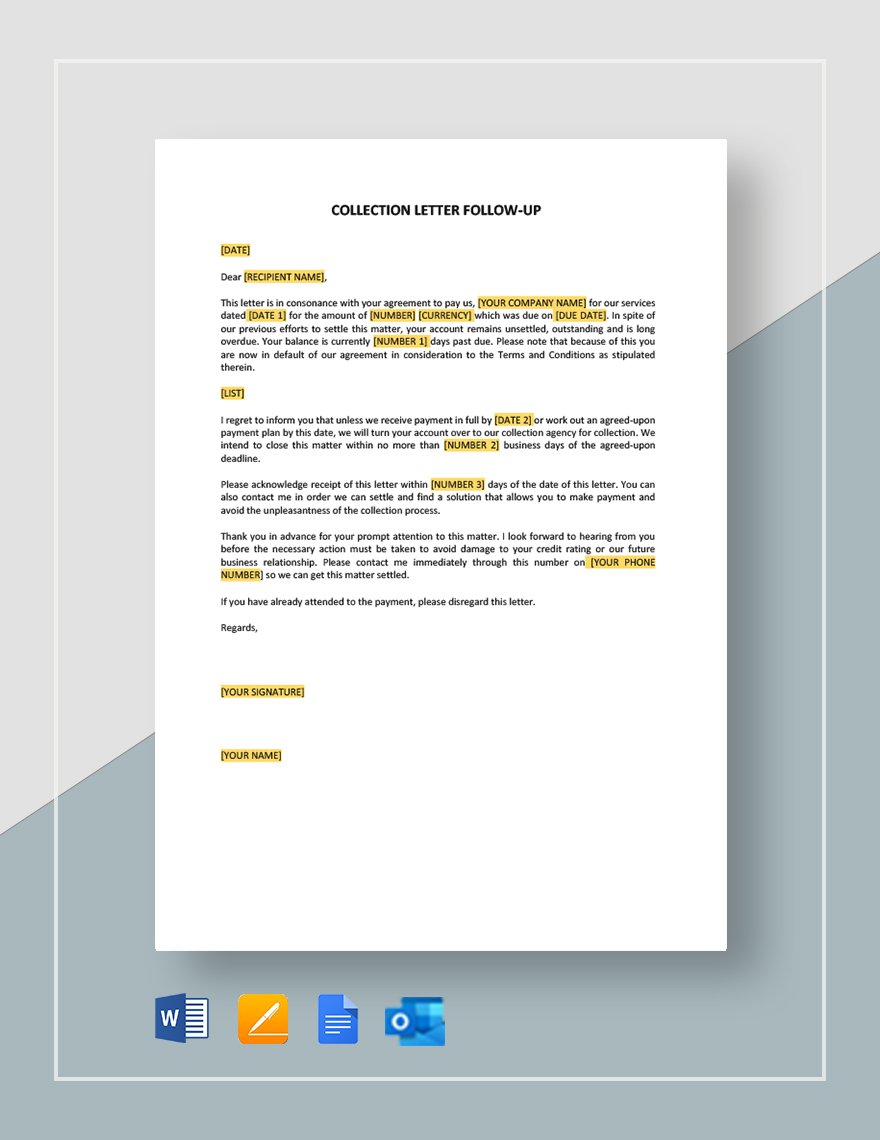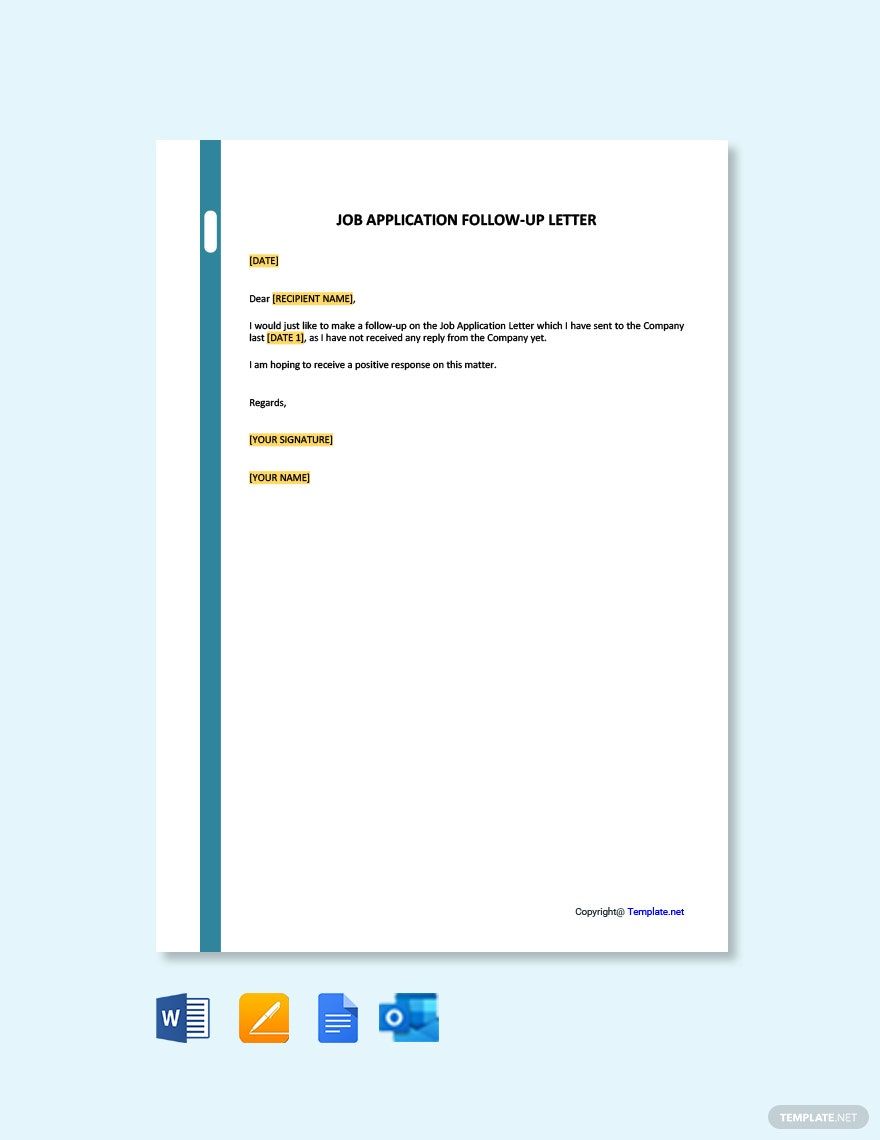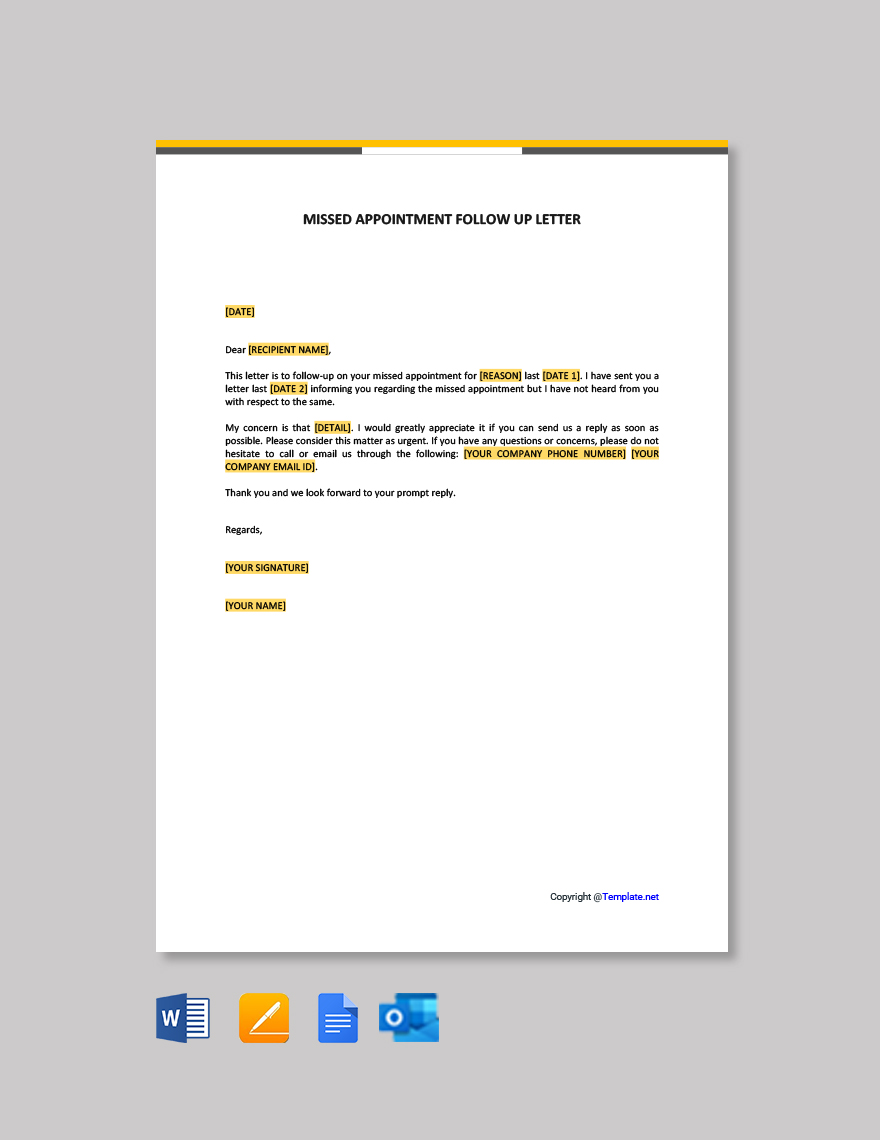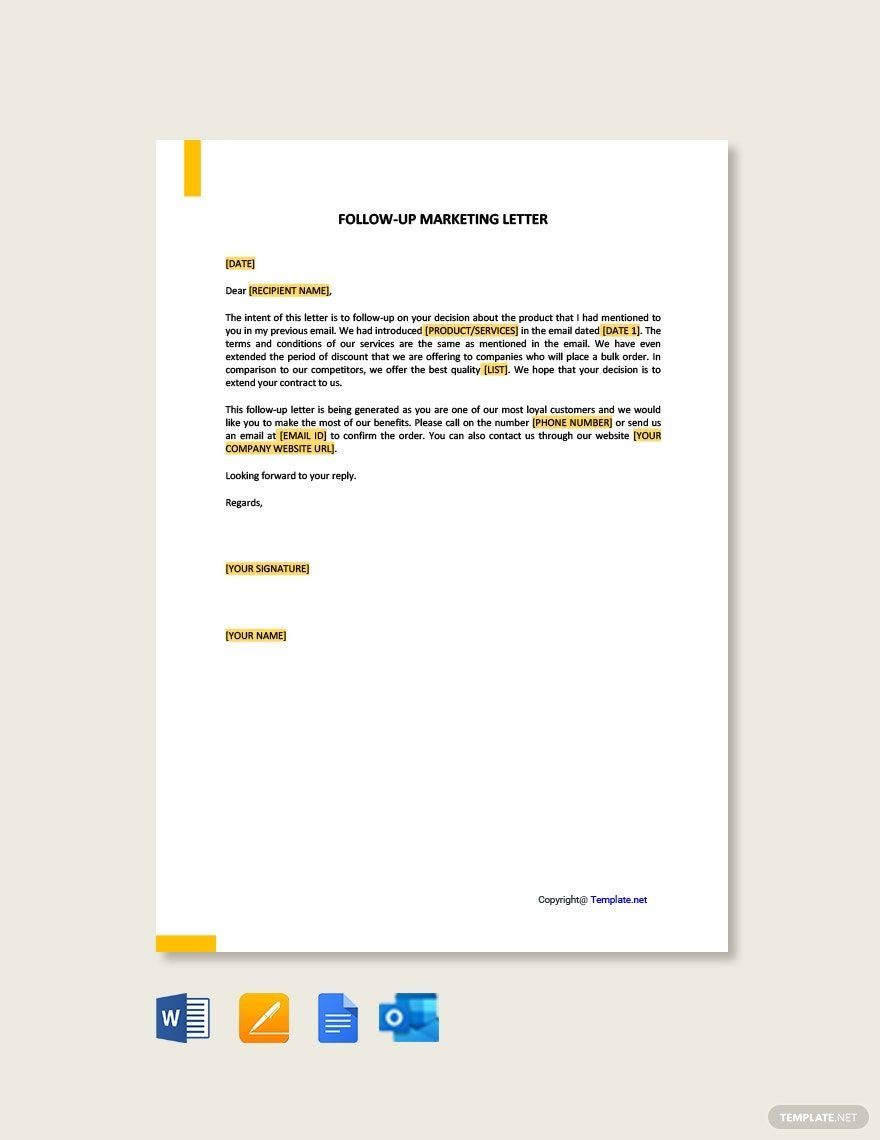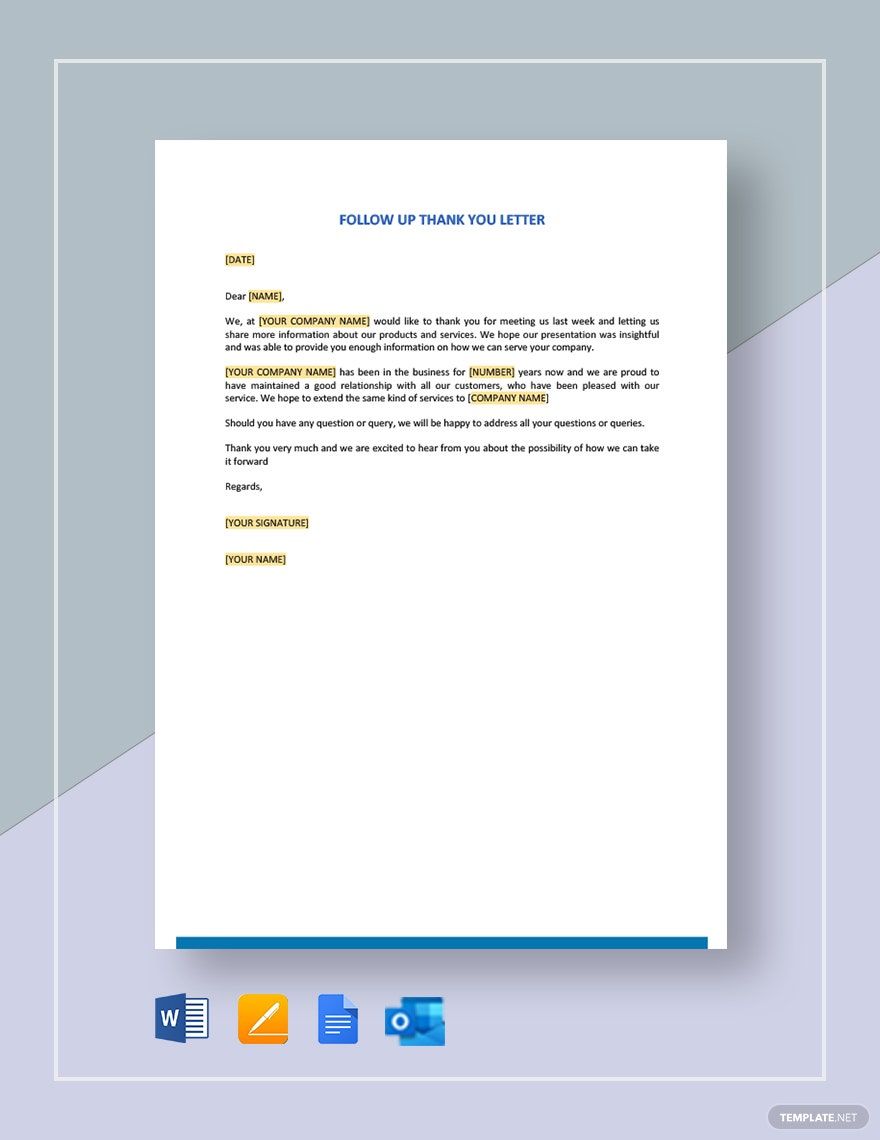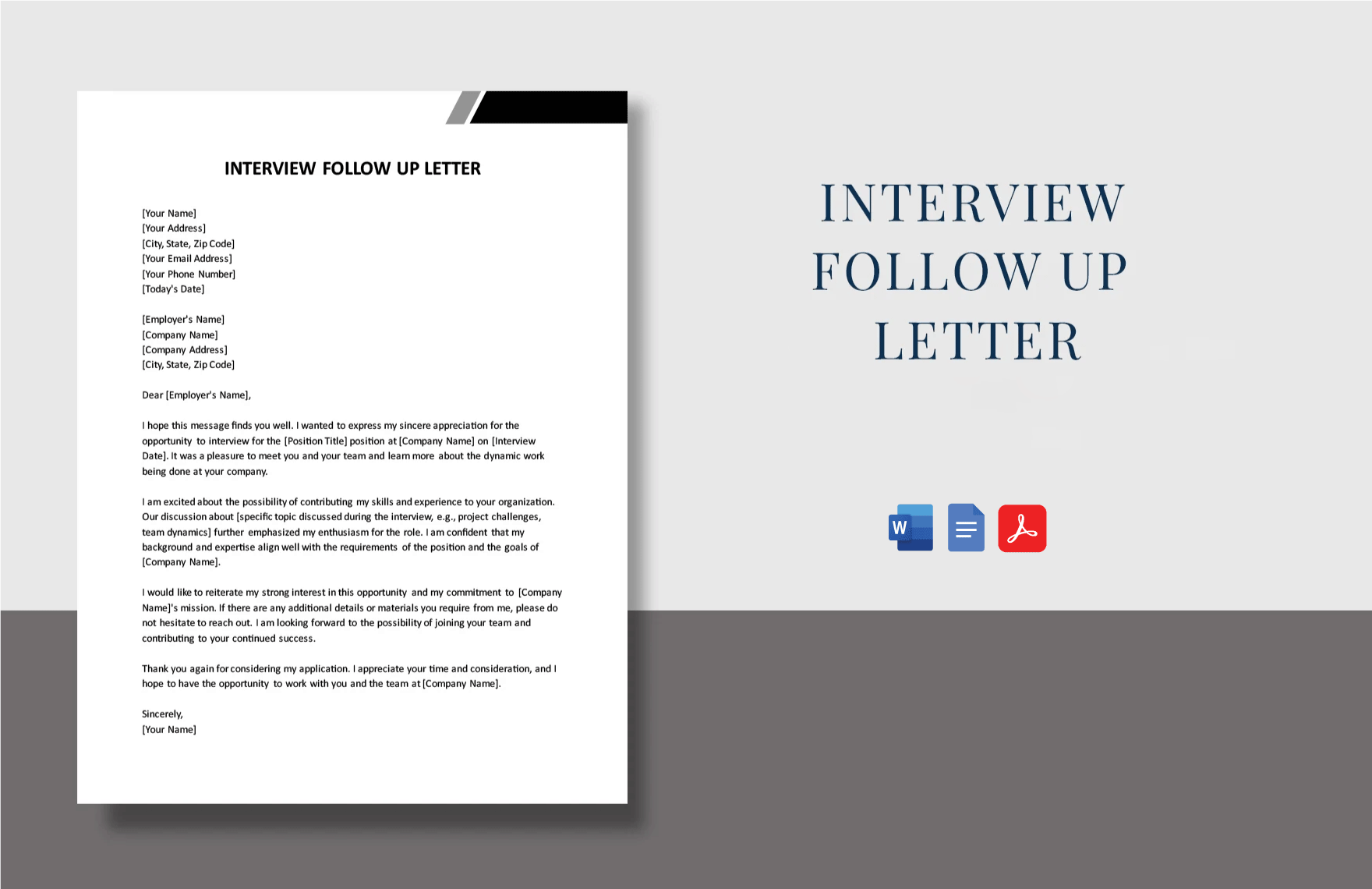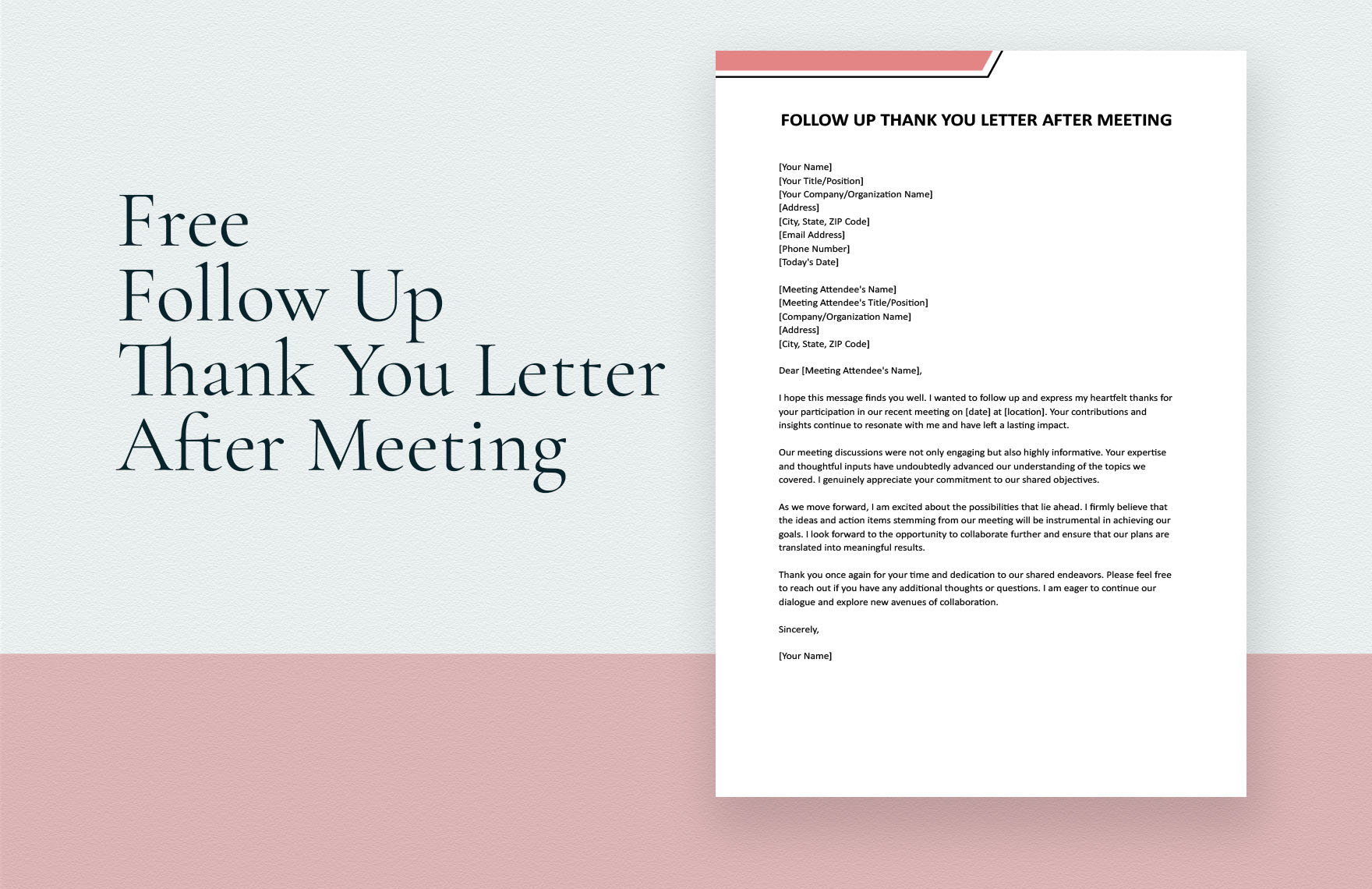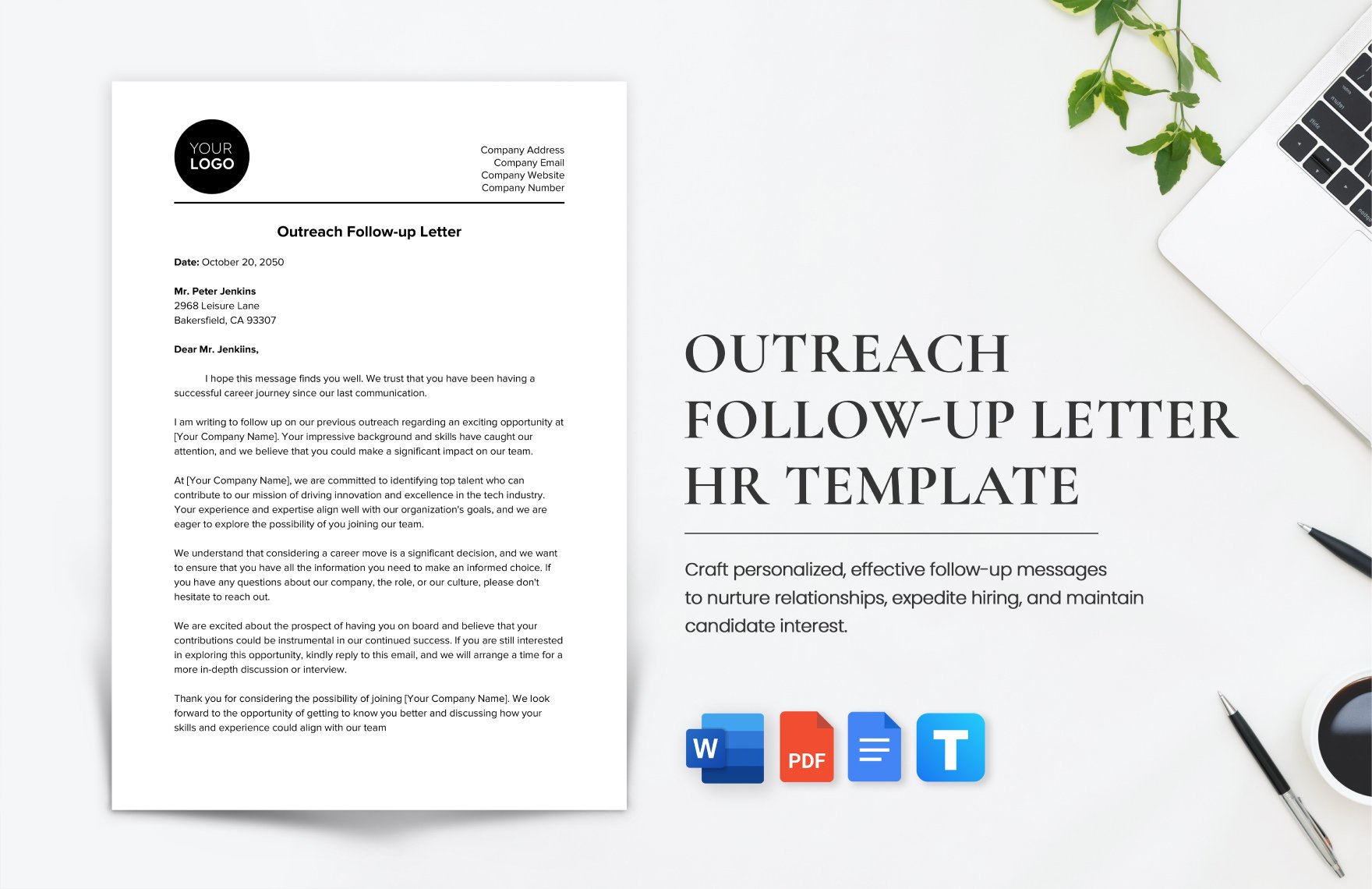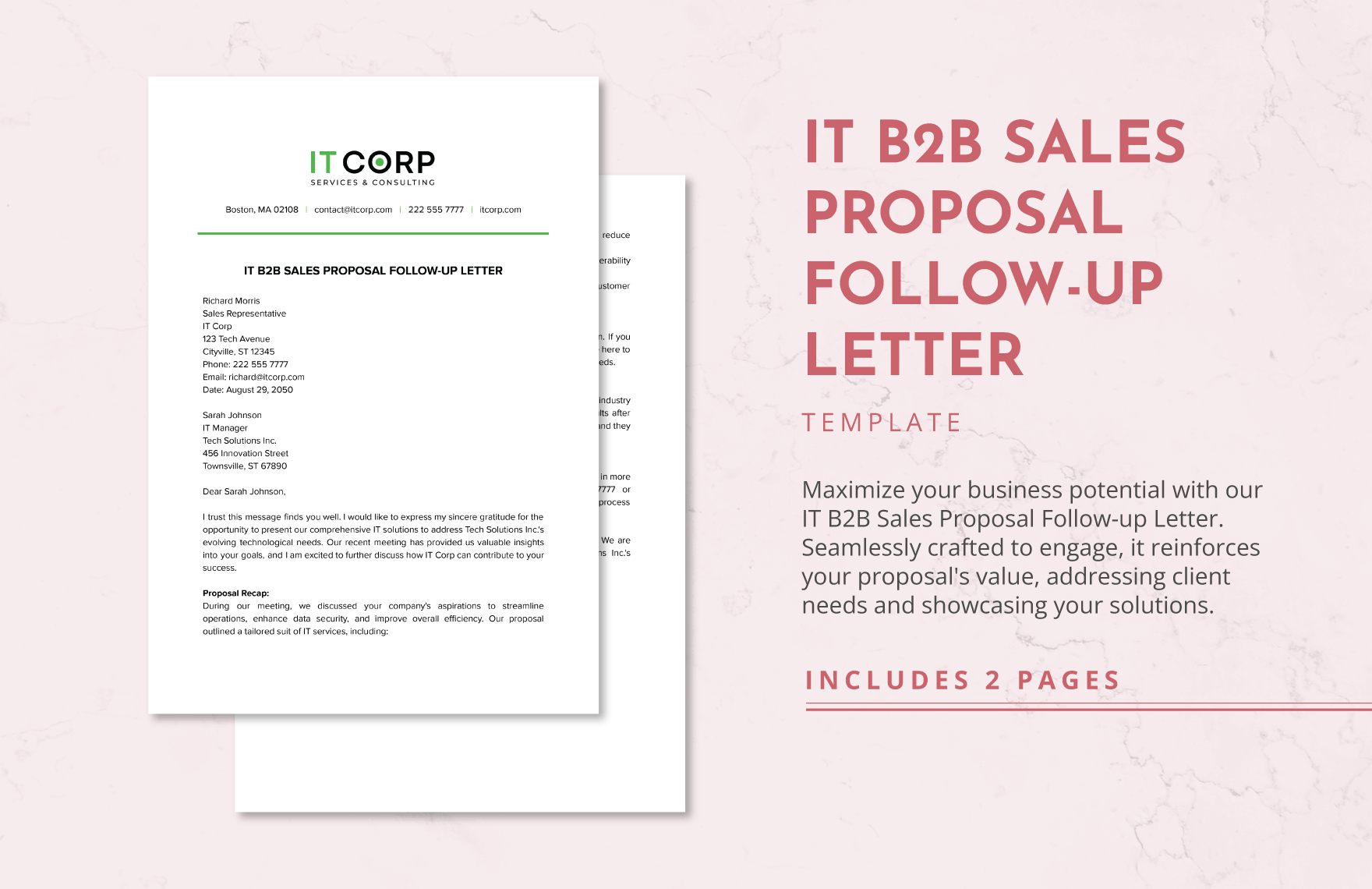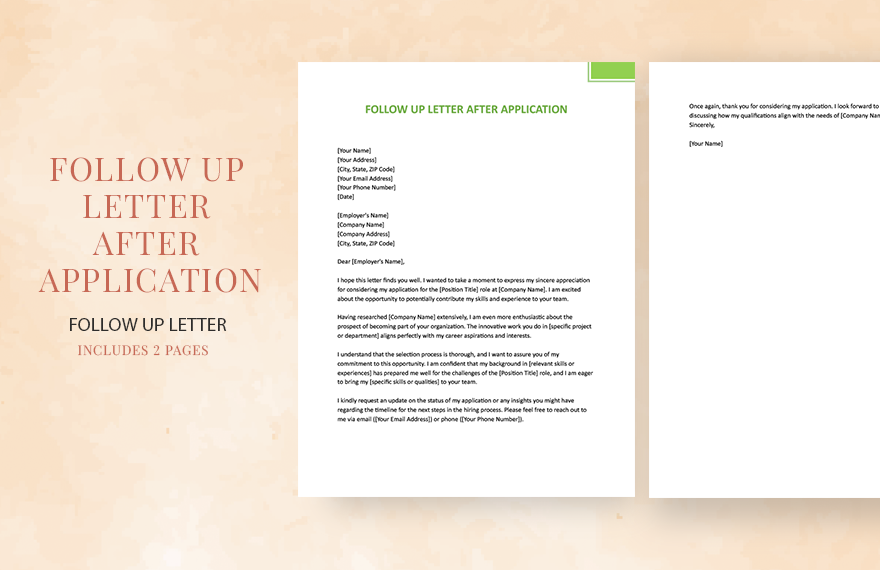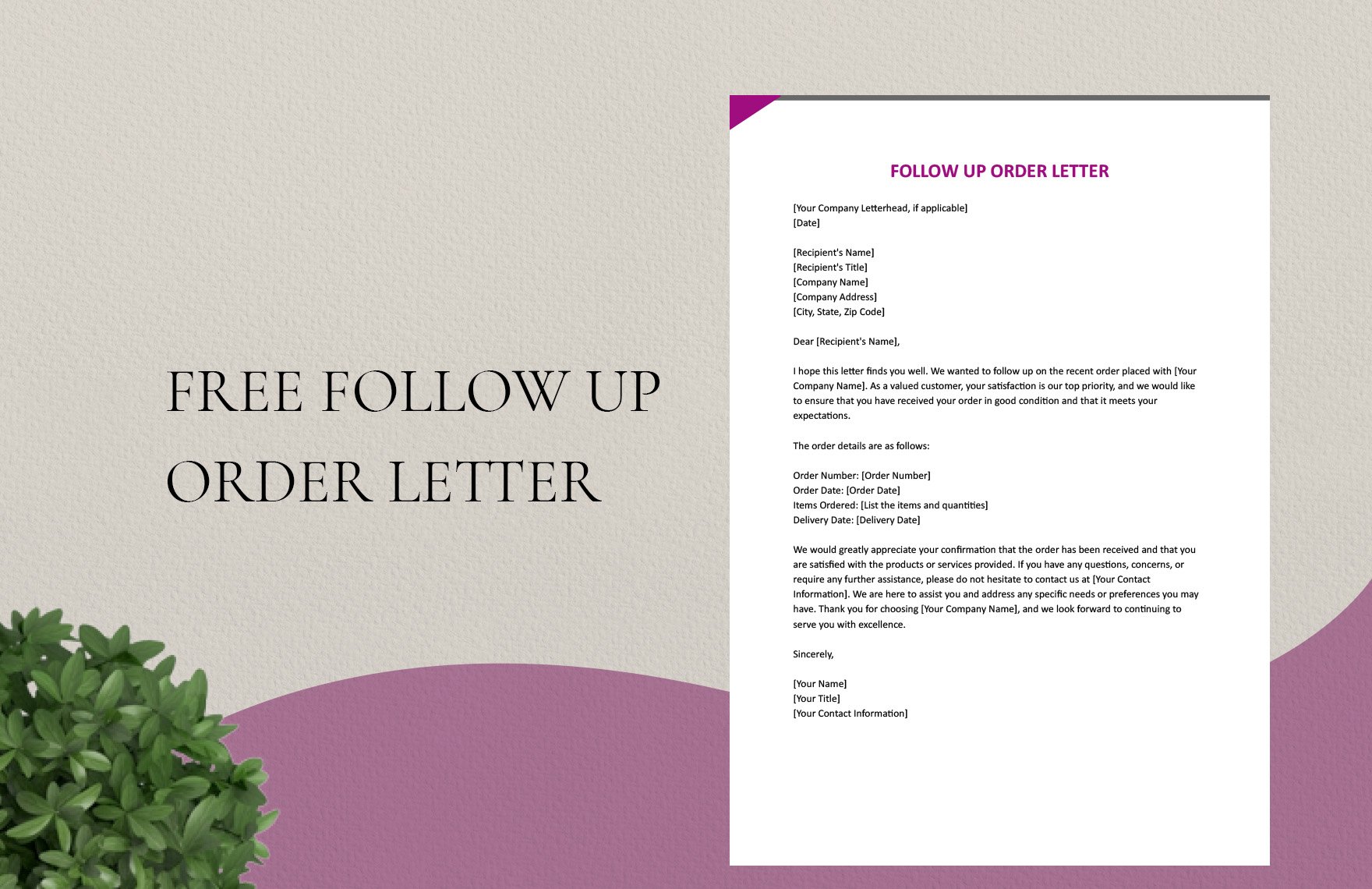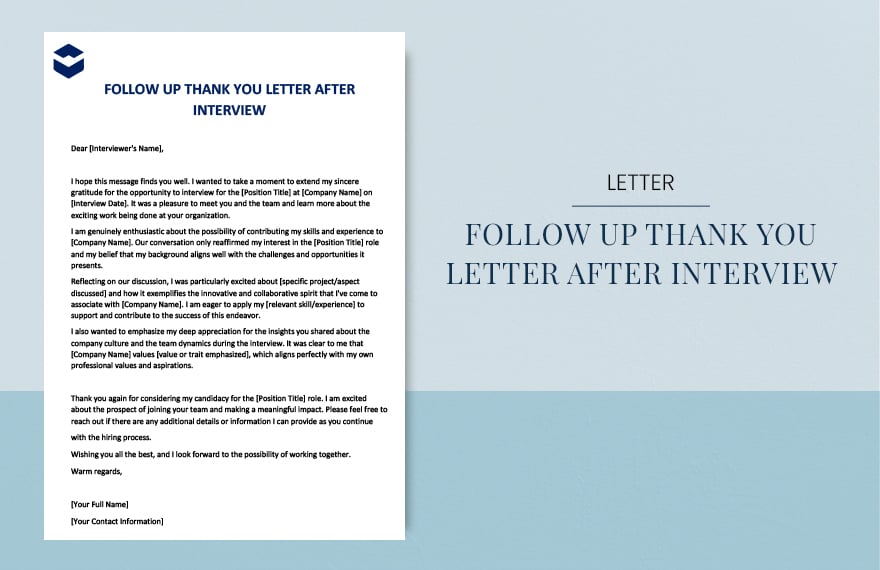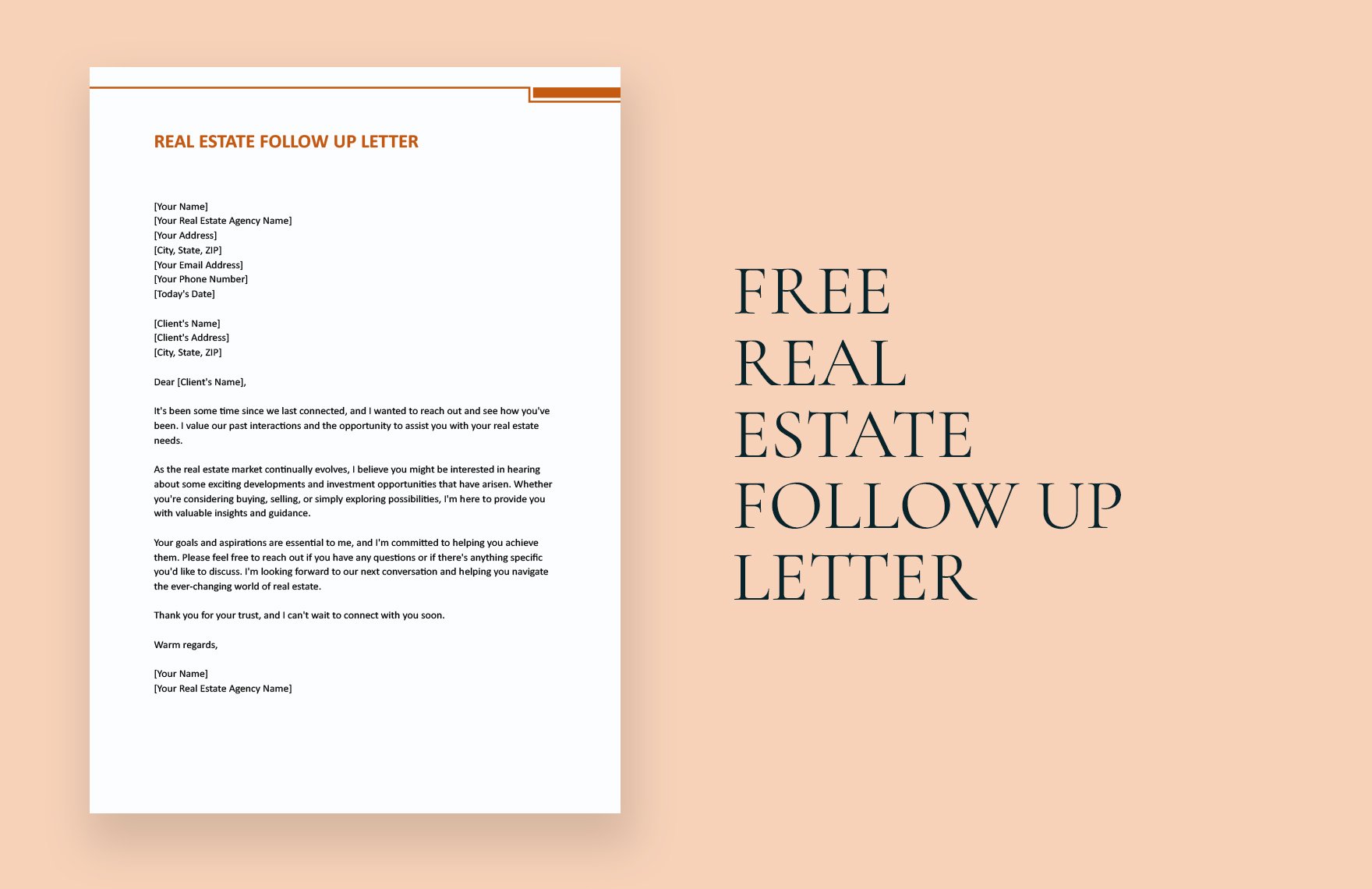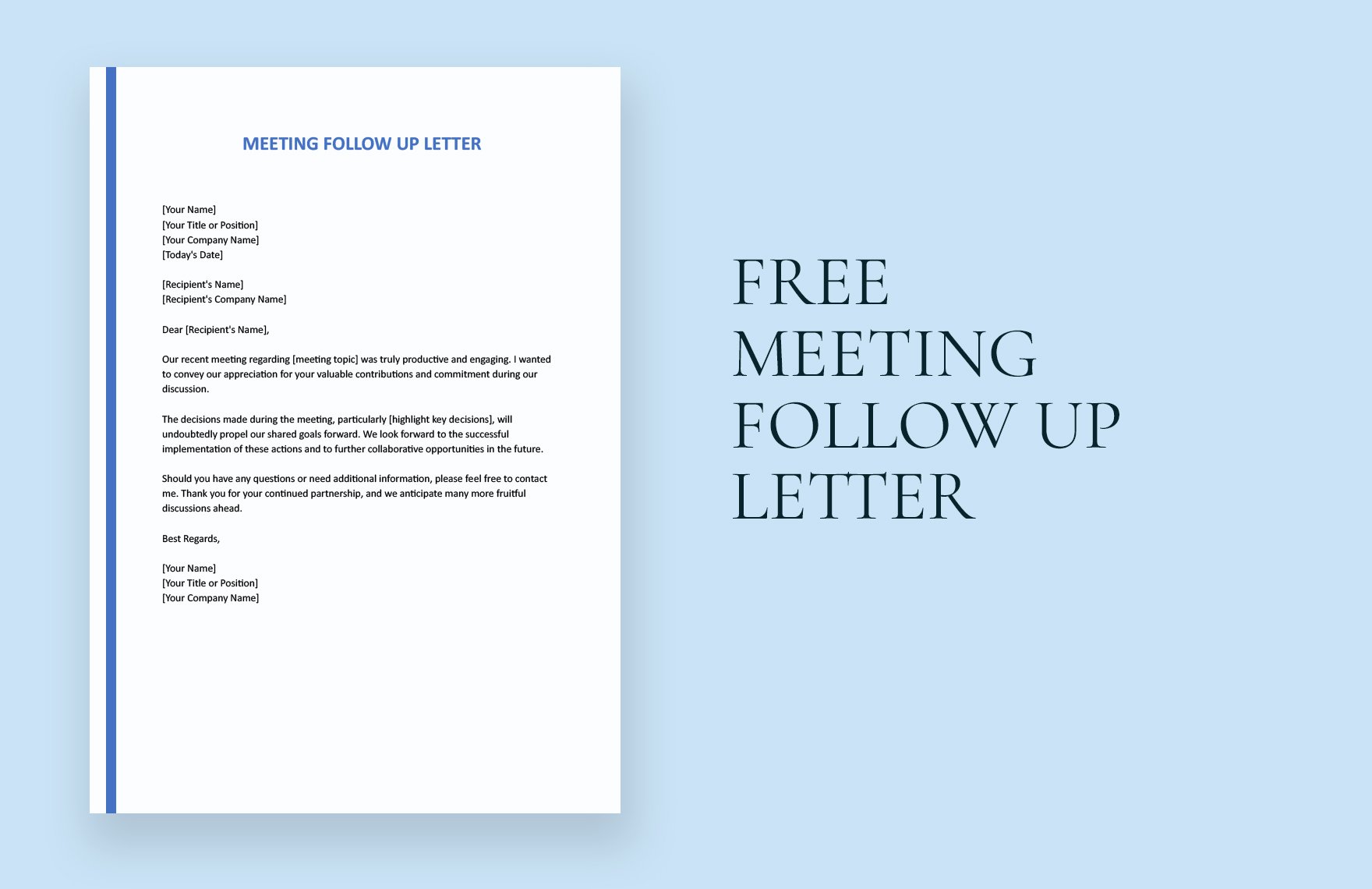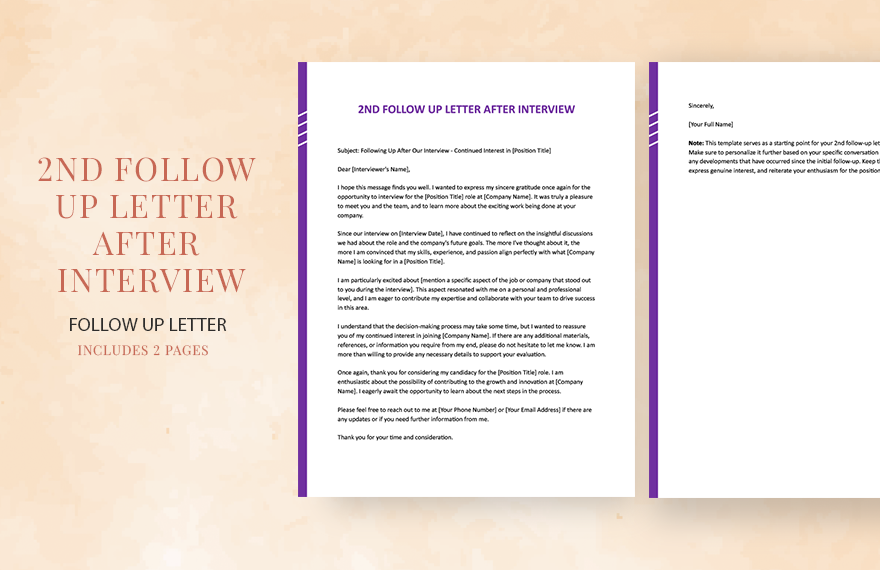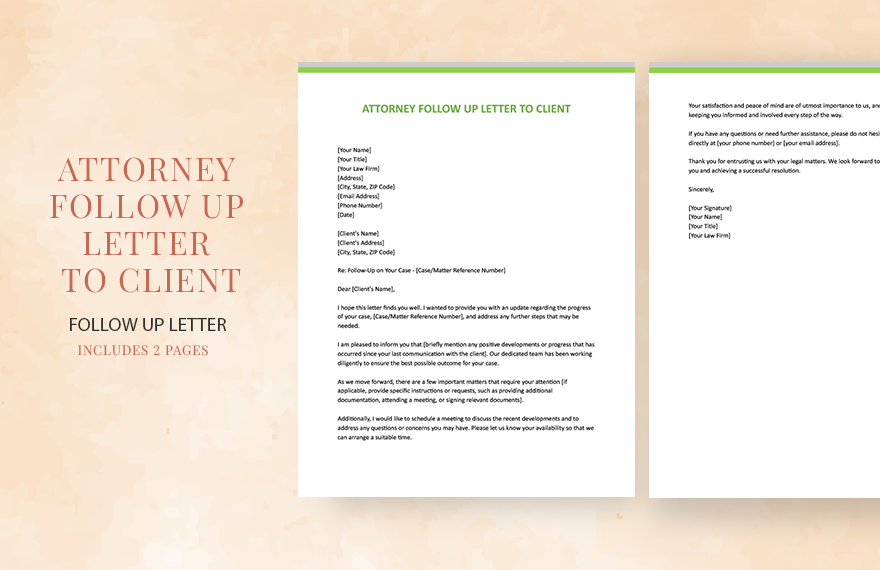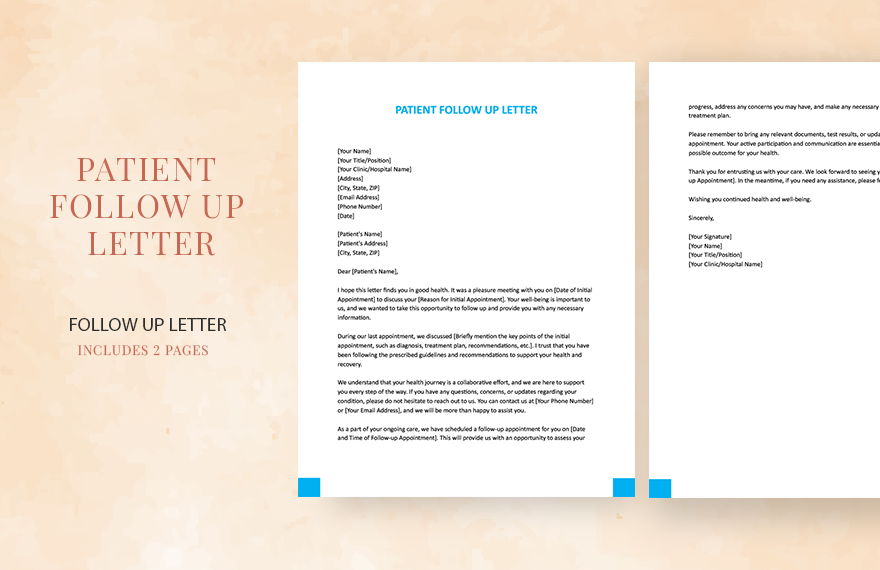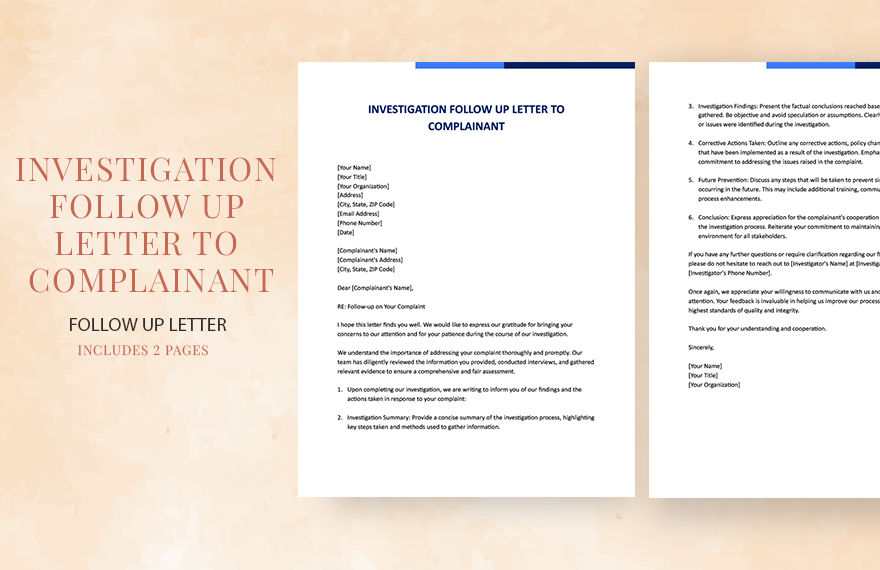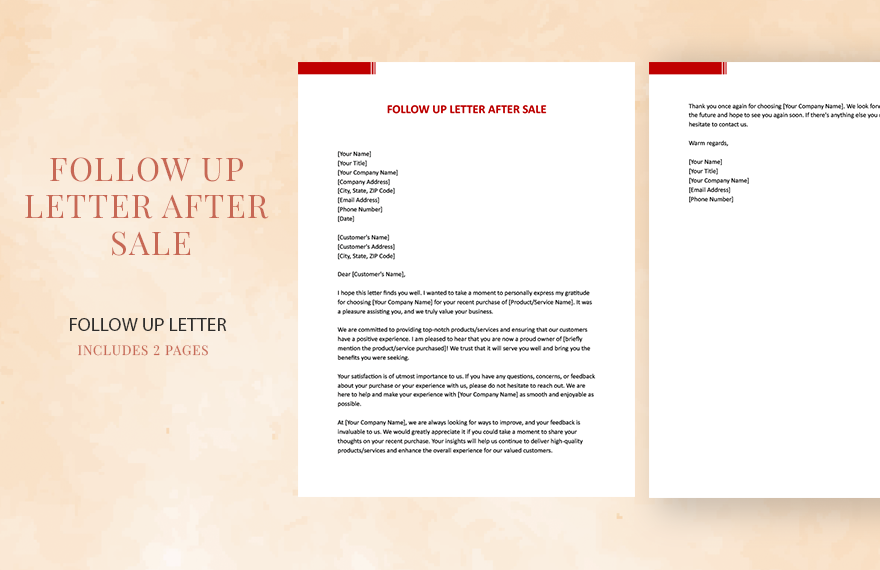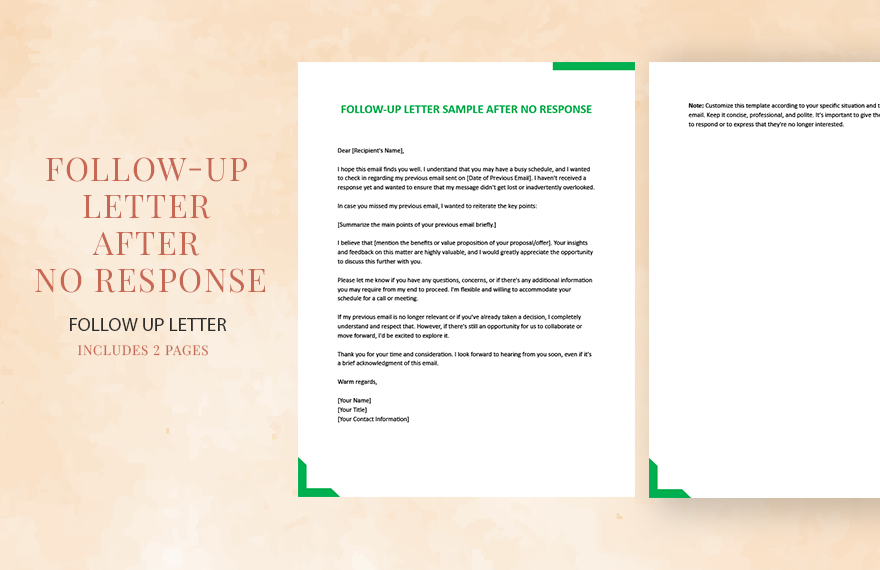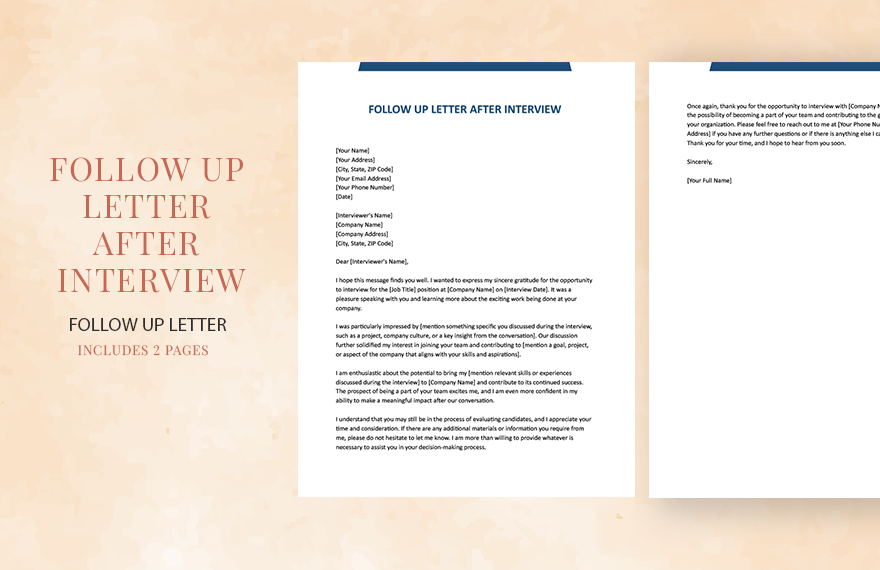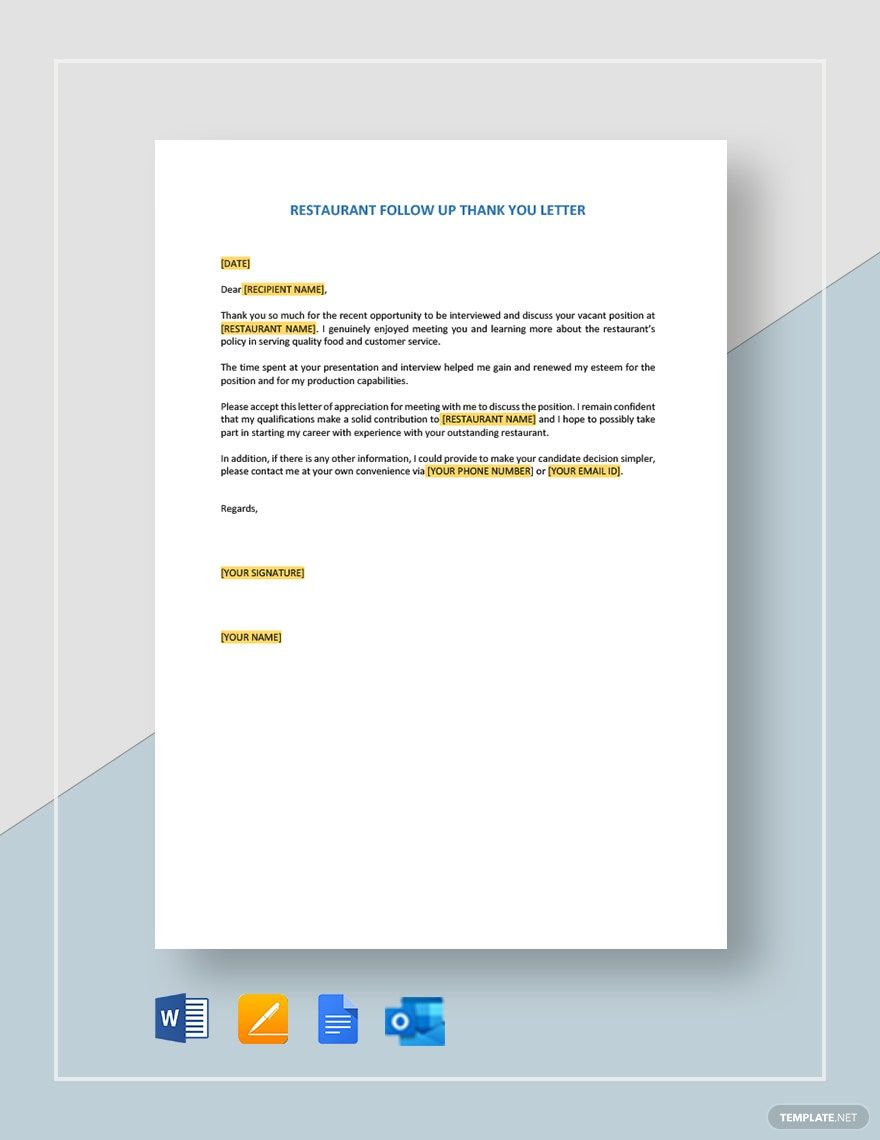Enhance Your Communication with Professional Follow Up Letter Templates in Google Docs by Template.net
Effortlessly take your business correspondences to the next level with Free pre-designed Follow Up Letter Templates in Google Docs by Template.net. Perfect for professionals seeking to establish a strong follow-up protocol, these templates empower you to draft compelling letters swiftly, without the need for extensive writing skills. Whether you're looking to reconnect with potential clients after a successful meeting or express your gratitude to a job interviewer, these templates have you covered. Choose from a range of pre-designed options, download, and print your files in Google Docs format. With straightforward instructions and beautiful pre-designed templates available for Free, crafting polished communication pieces has never been easier, allowing you to focus on delivering the message while maintaining consistency and professionalism. These templates are ideal for digital distribution or printing, providing options for any communication strategy.
Delve into the expansive world of meticulously curated Follow Up Letter Templates to discover even more exquisite Premium pre-designed templates in Google Docs format. With a library constantly enriched with the latest designs, you have a plethora of choices at your fingertips to keep your correspondences fresh and impactful. Seamlessly download or share your polished letters via link/print/email/export, ensuring a broader reach and maintaining essential standards effortlessly. Mix and match from both Free and Premium templates to maximize flexibility and find the perfect fit for your unique needs. Consider deploying a blend of styles and tones to maintain engagement while following up, perfect for ensuring your letters resonate with every recipient.
